I shot the eclipse with an iPhone 15 Pro Max, Google Pixel 8 Pro and a Samsung Galaxy S23 Ultra – here's which one did best
Challenges aplenty
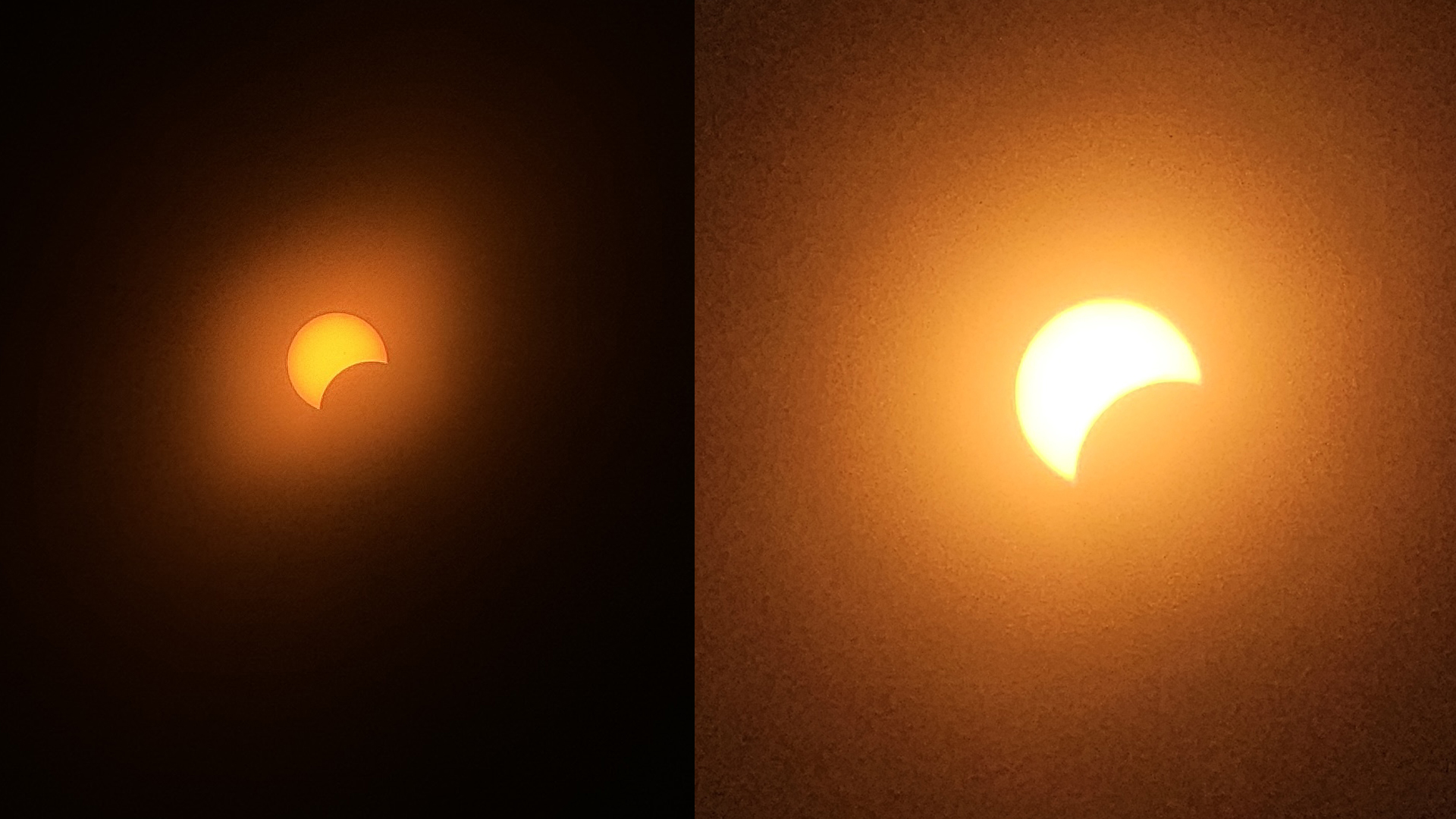
I had three flagship phones on three different tripods all aimed at a sun rapidly being crowded by a nuisance moon, and all I wanted was one or two excellent eclipse shots.
Turns out that photographing a solar eclipse with your smartphone is not that easy. In fact, figuring out a repeatable process without cauterizing your retinas is downright challenging. But I did it. I grabbed some of the best smartphones money can buy, the iPhone 15 Pro Max, Google Pixel 8 Pro, and the Samsung Galaxy S23 Ultra, and prepared for 180 minutes of celestial excitement.
That last selection might turn a few heads. It is, after all, a now aging flagship Android phone that does not have the latest image processing or even the fastest Qualcomm Snapdragon 8 Gen 3 chip found in the Galaxy S24 Ultra (the S23 Ultra has the Gen 2). However, one thing it has that none of my other flagship smartphones offer is a 10X optical zoom (not even the S24 Ultra has that).
Throughout this endeavor I committed to not using any enhancements, leaving the phones' zoom lenses to do their best work without digital magic. I never pinched and zoomed. I just pointed each phone at the eclipse and hit the shutter.
Making an adjustment
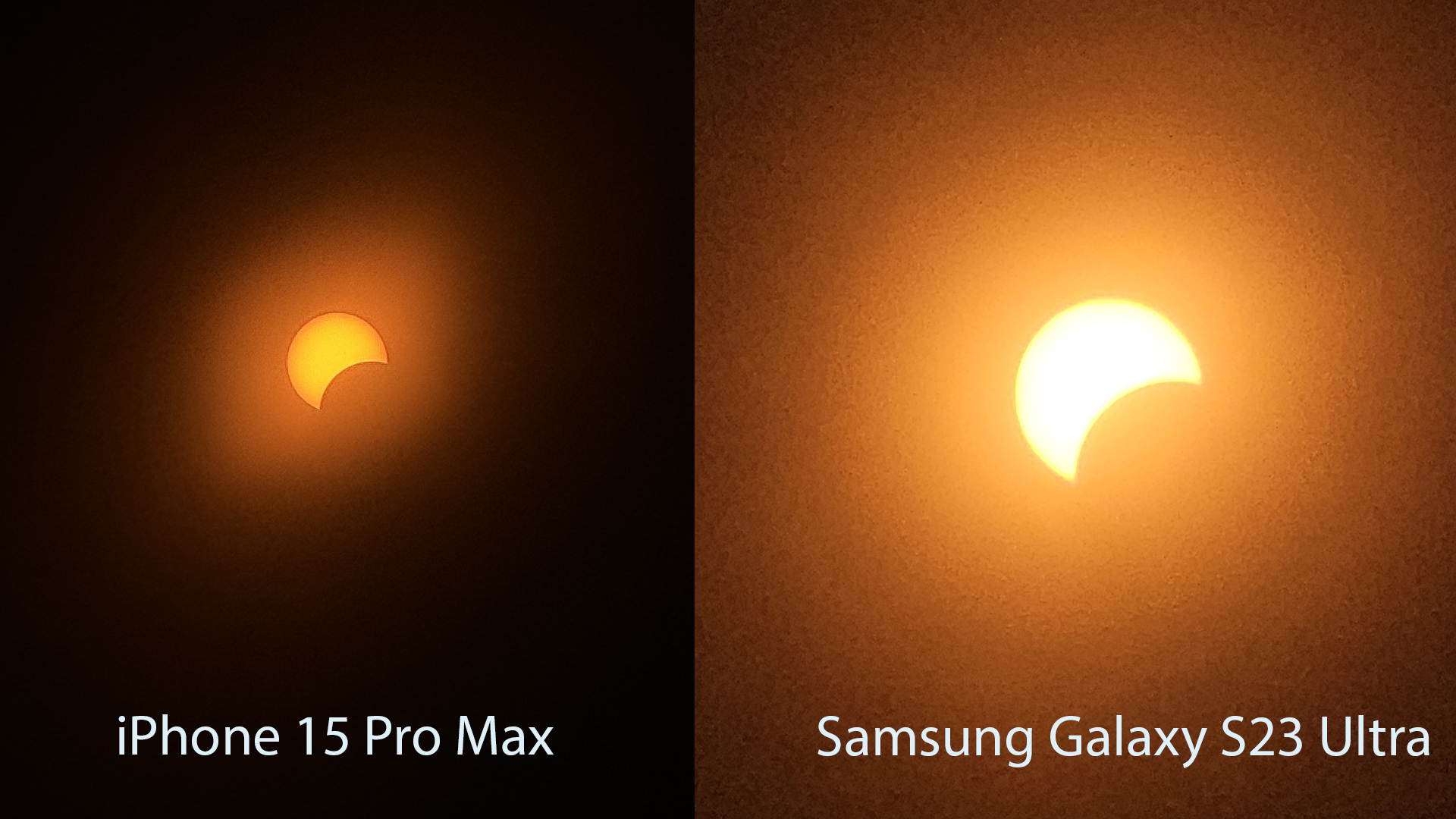
Except as soon as I did this, I realized it wasn't going to work. The sun naturally blows out the exposure on all the phones. It's not that I haven't taken pictures of the sun before. I've snapped quite a few with the iPhone and to get over the blowout, I tap the sun on screen and that speeds up the exposure to lower the light and bring out the sun's definition.
An eclipse wreaks havoc with a smartphone's exposure controls, and the more the moon occludes the sun, the sharper that light becomes. My solution was simple and likely one you've seen elsewhere. I took my Celestron eclipse glasses and carefully placed the film of one sunglass lens over each phone's zoom lens. If you ever have trouble identifying which camera is the zoom, just open the camera app, select the max optical zoom, and put your finger over each camera lens until you see your finger on the screen.
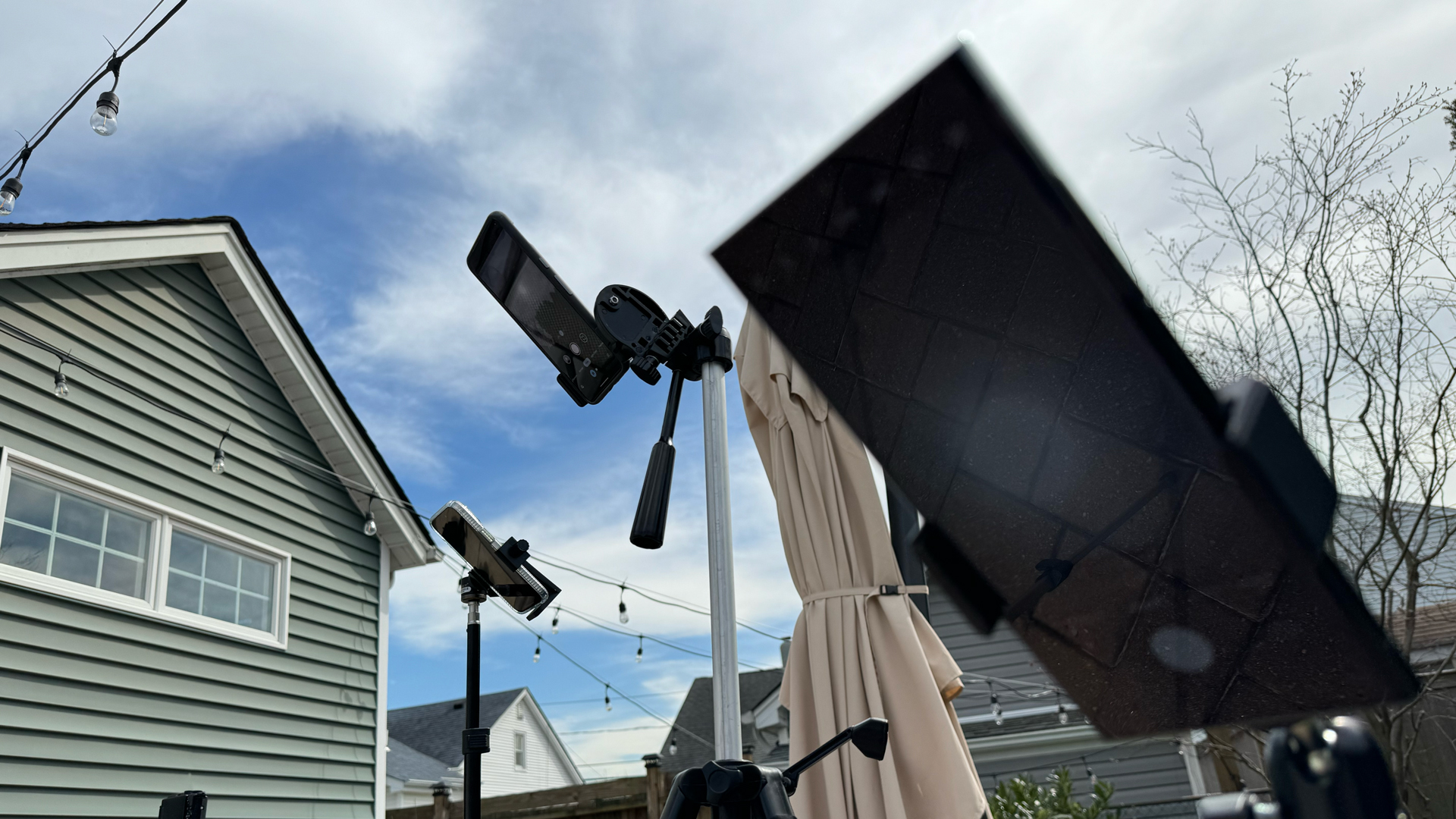
The solar sunglasses helped with cutting down the massive glare. After that, I tapped on the screen and adjusted the exposure until I could see the sun getting the Pac-man treatment from the moon. In most cases, the result was a very orange-looking sun.
Sign up for breaking news, reviews, opinion, top tech deals, and more.
For the next hour or so, I shifted from one phone to the other, repositioning my tripods, lining up the sun, and snapping away.
There were some non-smartphone-related glitches, like cloud cover right before our peak totality (90% where I live) but I was more successful than I expected and the smartphones, for the most part, were up to the challenge.
Not all smartphone cameras are created equal
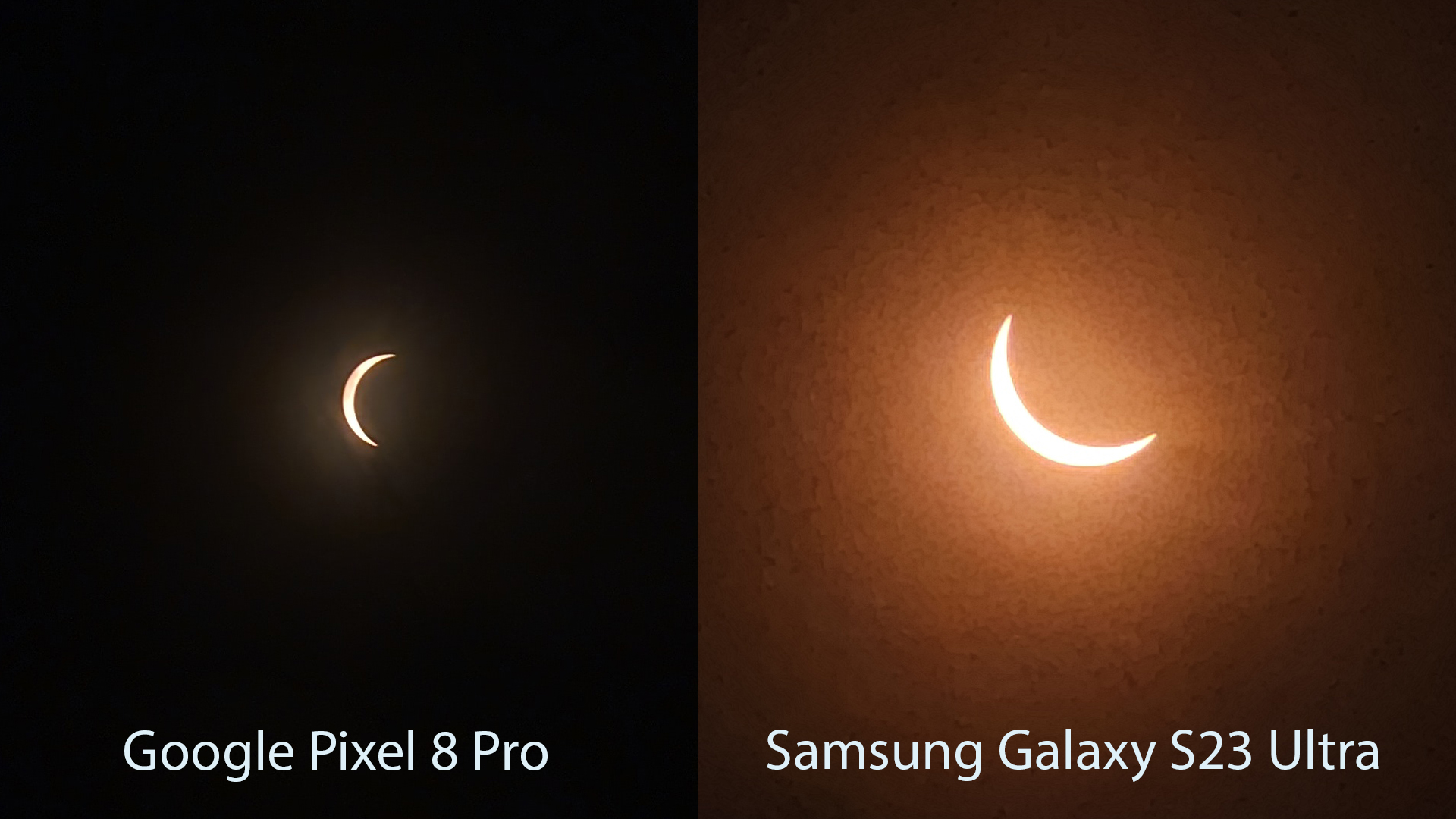
You'll see some of my comparisons above and below (I've used the best from all the phones in the above shots) which I did not resize or enhance, other than cropping them where possible to show them side-by-side.
While the iPhone 15 Pro Max and Pixel 8 Pro shoot at 12MP (the latter is binned from a 48MP sensor, meaning four pixels combined into each one), the Samsung Galaxy S24 Ultra's 10X zoom camera is only 10MP. I think those numbers do factor into the overall quality.

The Google Pixel 8 Pro matched the iPhone 15 Pro Max's 5x zoom and sometimes seemed sharper than either the iPhone or Galaxy S23 Ultra, but I also struggled the most with the Pixel 8 to capture a properly exposed shot. It was also the only phone that forced a long exposure after the peak 90% coverage. The good news is that some of those long exposures offered up the most atmosphere, managing to collect some of the cloud cover blocking my full view of the eclipse.
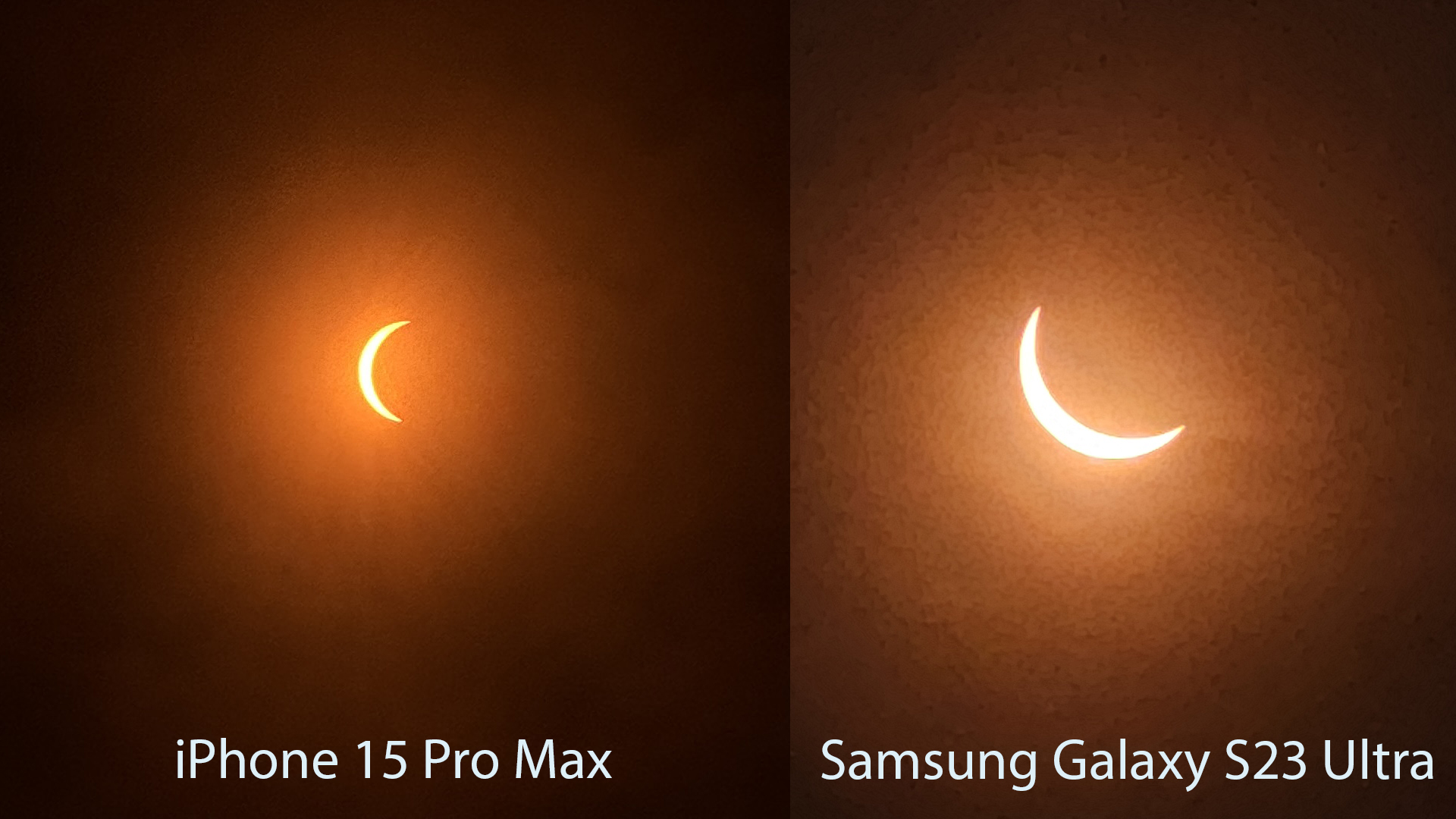
Things got more interesting with the iPhone 15 Pro Max and its 5x Tertrapism lens. The eclipse appears a little closer than on the Pixel 8 Pro, but also more vibrant. There are a handful of iPhone 15 Pro Max pictures where I can see the clouds and it's quite beautiful. As with all the phones, this image capture process was a bit hit-and-miss. Colors shifted from orange to almost black and white, and sticking the focus was a challenge. When I did manage to capture a decent photo, I was thrilled.
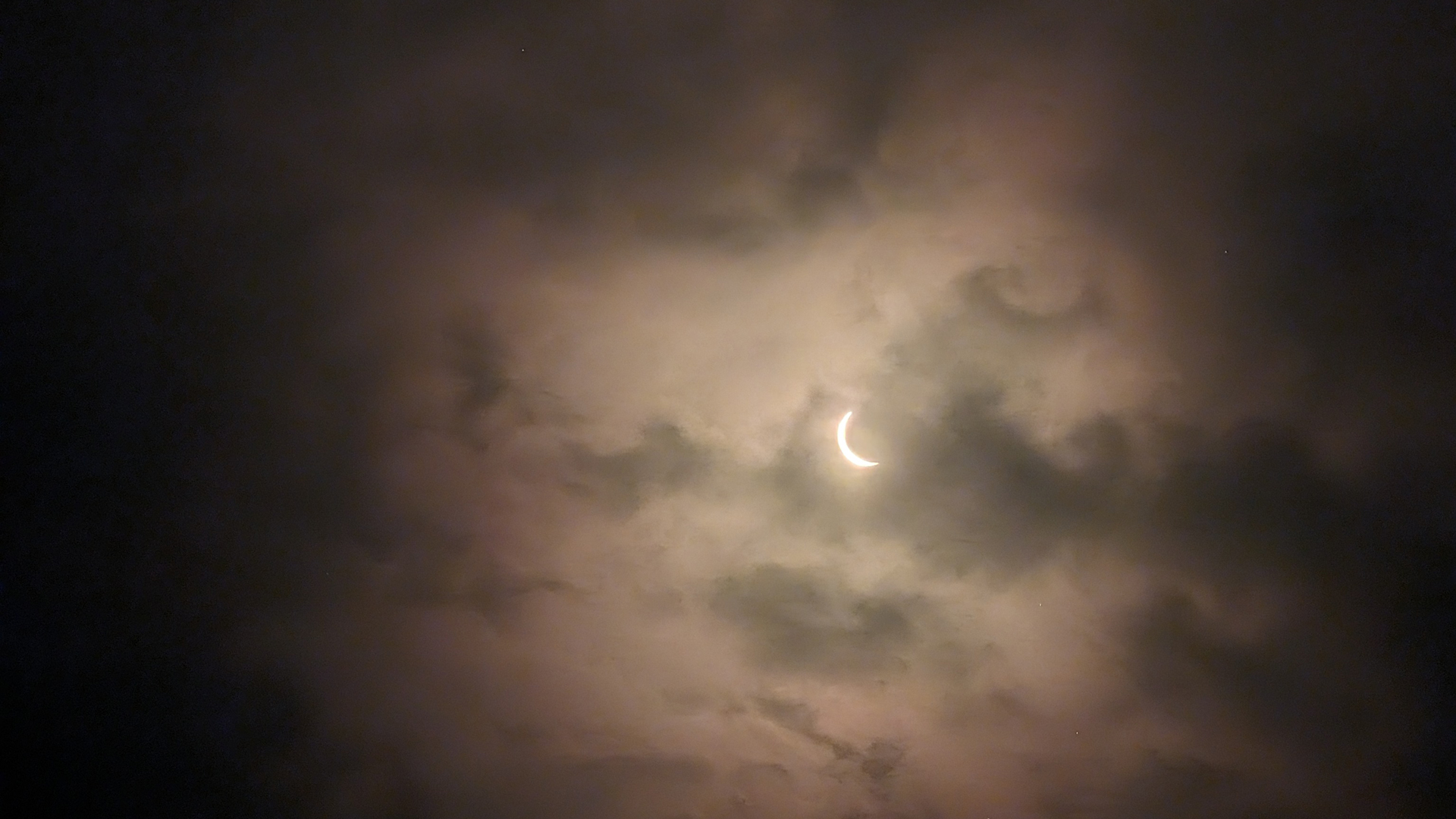
The Samsung Galaxy S23 Ultra's 10x optical zoom pulled me thrillingly close to the eclipse. It was certainly easier to get the exposure and focus right. At a glance, the S23's images are better but closer examination reveals significant graininess, so much so that some appear almost like paintings and rough canvas.
As I dug deeper into all the photos, I noted how each phone camera used ISO settings to manage the image capture and quality. The iPhone 15 Pro Max ranged from ISO50 (for ultra-bright situations and action shots) to ISO 800 (very slow light capture, and usually introduces a lot of grain). Naturally, those at the upper end of the spectrum are just as grainy as those from the Galaxy S23 Ultra, which ranges from as low as ISO 250 to 800.
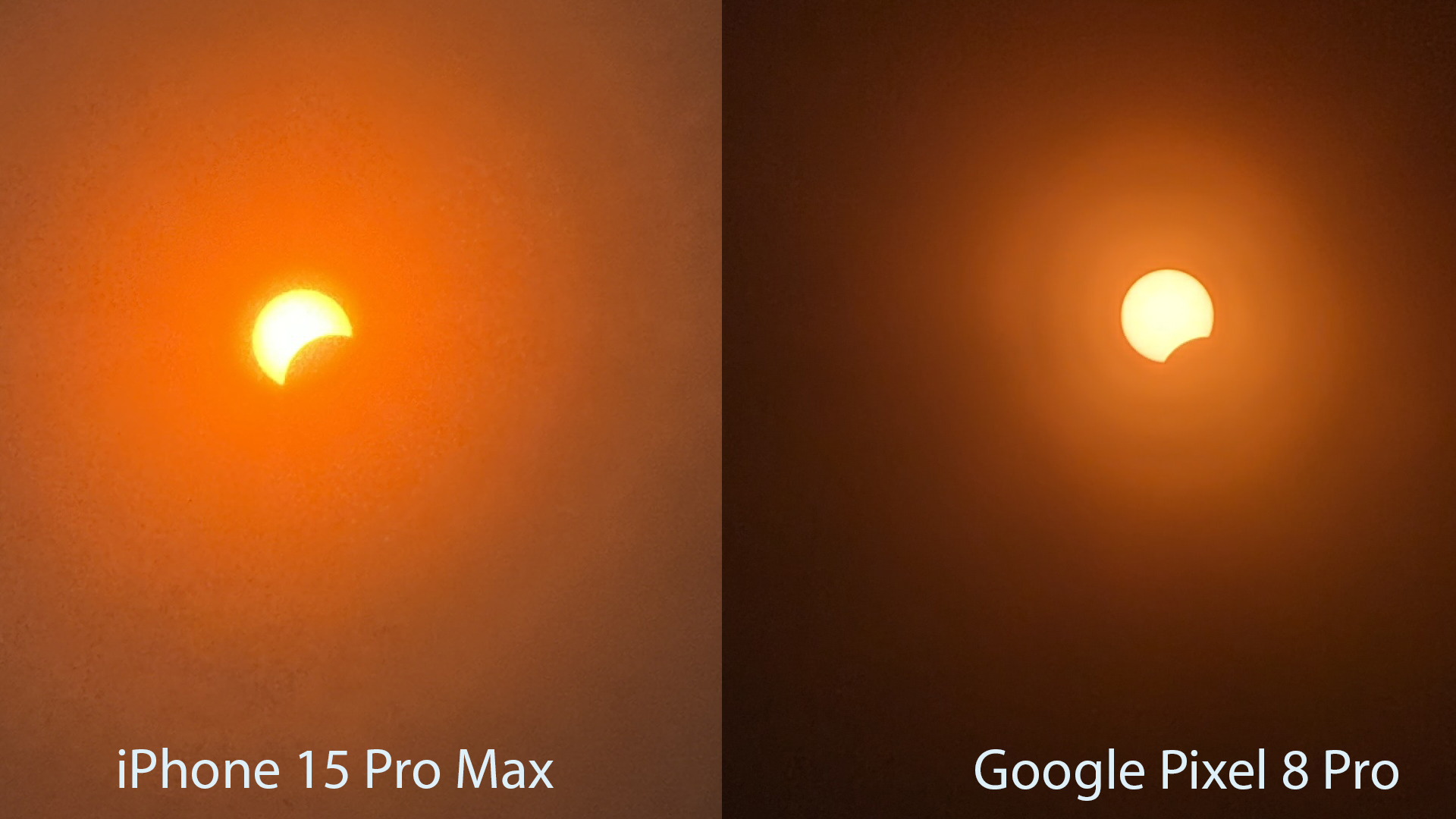
The Google Pixel 8 Pro has the widest range from as low as ISO 16 to an astonishing ISO 1,536. It used that for a capture of the 90% eclipsed sun behind clouds. Aesthetically, it is one of the better shots.
If I had to choose a winner here, it would be the Samsung Galaxy S23 Ultra by a nose. That extra optical zoom means you have more detail before the graininess kicks in.
The iPhone 15 Pro Max is a very close second, but only because it was easier to capture a decent shot. I also think that if it had a bigger optical zoom, the iPhone's powerful image processing might've outdone the year-old Galaxy.
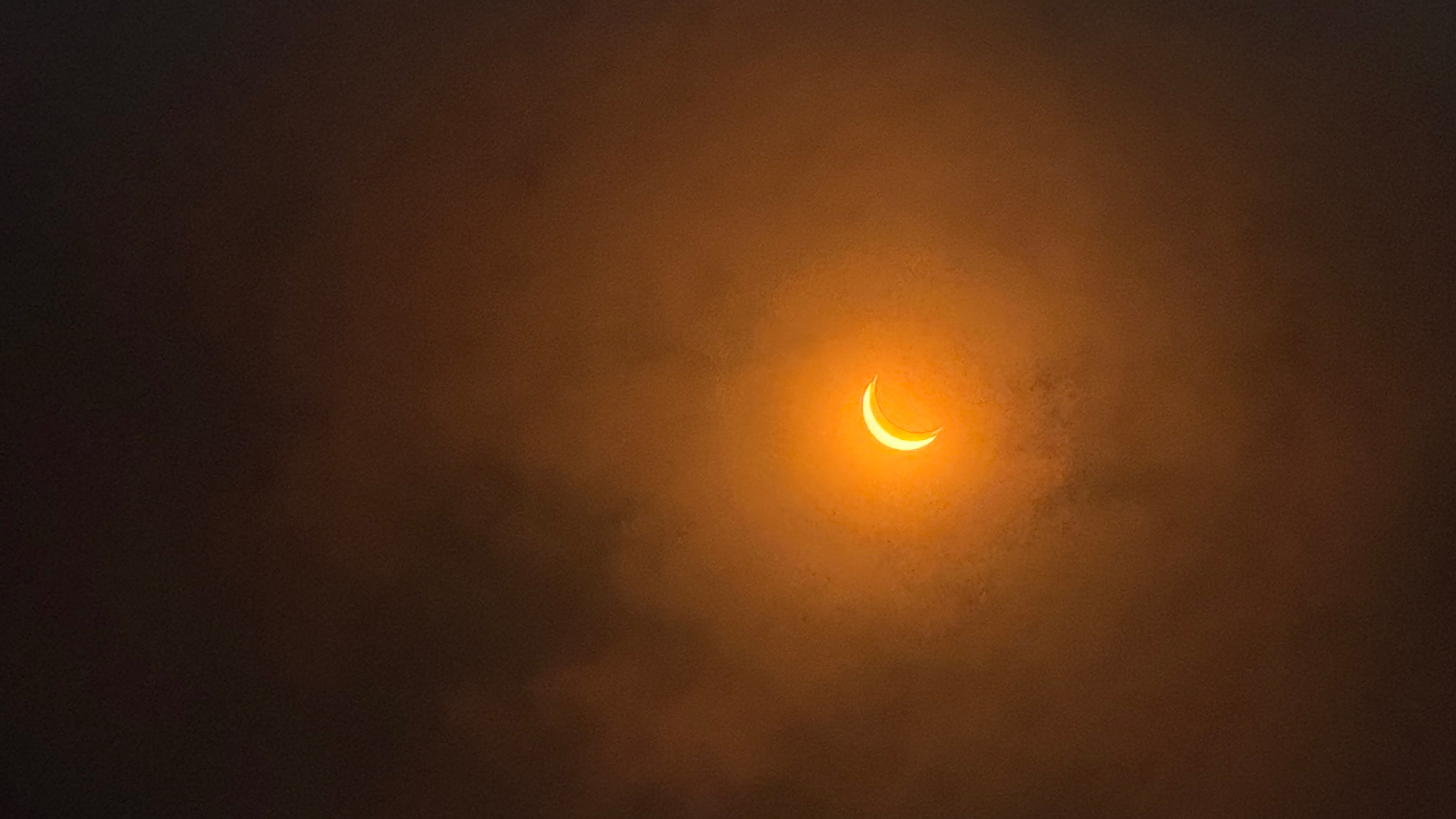
Google Pixel Pro 8 has some great shots but also a lot of bad ones because I couldn't get it to lock in on the converging sun and moon. It also suffered the most when it came to exposure. Even so, I am impressed with the ISO range and the sharpness of some shots.
The iPhone 15 Pro Max and Google Pixel 8 Pro also deserve special mention for producing my two favorite shots. They're not the closest or clearest ones, but by capturing some of the clouds, they add an ethereal, atmospheric element.
If I live long enough to see another eclipse (there's one in the American Midwest in 2044), I'll look for special smartphone eclipse filters and give it another try. By then we could well have 200x optical zoom cameras with 1,000MP sensors.
Correction: An earlier version of this article transposed the description of ISO performance.
You might also like
- You took amazing smartphone eclipse photos, but reminded me why I didn't use Samsung Galaxy S23 Ultra's 100x Space Zoom
- The best camera phone: top mobiles for photography ...
- Turns out running with a camera phone has really helped me focus ...
- The best phone: top smartphones in the US right now ...
- Megapixels don't matter! Here's what's really important on your ...
- But are iPhones a rip-off?

A 38-year industry veteran and award-winning journalist, Lance has covered technology since PCs were the size of suitcases and “on line” meant “waiting.” He’s a former Lifewire Editor-in-Chief, Mashable Editor-in-Chief, and, before that, Editor in Chief of PCMag.com and Senior Vice President of Content for Ziff Davis, Inc. He also wrote a popular, weekly tech column for Medium called The Upgrade.
Lance Ulanoff makes frequent appearances on national, international, and local news programs including Live with Kelly and Mark, the Today Show, Good Morning America, CNBC, CNN, and the BBC.